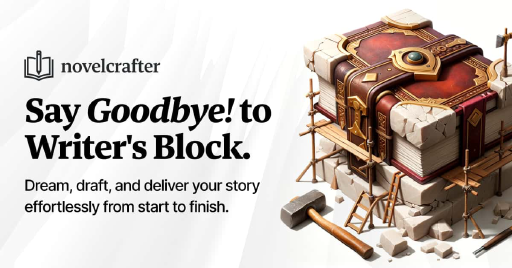Building Fantasy Worlds That Captivate
So, you wanna create a fantasy world that sucks folks right in? It’s all about skipping those info-dumps and diving straight into the action. This way, your readers won’t just reach for another book; they’ll stick with yours.
Skip the Infodumps
When weaving tales of other worlds, doling out the deets on culture and magic bit-by-bit is your best bet. Slammin’ your audience with endless paragraphs about your world’s backstory, terrain, or magical mumbo-jumbo can be overwhelming and stall the story. Instead, wear a magician’s hat — reveal pieces of info gradually. Let your readers walk alongside your characters, picking up snippets naturally as the plot unfolds. Folks enjoy peeling back the layers—it’s way cooler than a lecture.
Imagine this: instead of a long-winded explanation of your magical rules, you show characters using their powers in tight spots. Suddenly, those magical bits are part of the adventure, rather than a checklist of features. Still curious? Peep our guide on beginner writing tips and find juicy nuggets on how to write better stories.
Start With Some Bang
The start of your fantasy tale is your moment to shine, to grab your reader by the collar and pull them along for the ride. Open with action—maybe a chase, an awkward meeting, or a showdown—to kick off with suspense. Going in media res, which means plopping readers into the thick of things, builds immediacy and curiosity. This way, attention is snatched from line one, causing them to flip those pages like they’re going outta style.
Picture kicking off not with a scene-setting spiel, but a gripping moment with your lead character. This sets the table for your world and forges an emotional bond with the reader. To shape killer intros, dive into creative writing exercises or get tips on how to write a great first chapter.
Creating worlds that make readers wanna visit again needs some thoughtful building blocks. Use these tactics to whisk your audience off to your fantastic realm, making sure every step of the journey matches the thrill of reaching the destination.
Streamlining the Plot
In fantasy writing, gripping your audience often means zeroing in on what really makes your story tick. By ditching the unnecessary distractions and easing into character introductions, your plot shines, and readers stay hooked.
Cutting Out the Extras
Side stories can be a ton of fun to dream up and might provide a nice little twist, but during editing, they often turn into the fluff you need to slash. If you’ve got bits that don’t tie back into the core of your tale, it’s time to let them go. This keeps your story on track and spares your readers the headache of trying to follow too many threads at once. Plus, those cut scenes? They make great bonus content or short stories for die-hard fans (Apex Authors).
| Why Side Stories Can Be a Problem | How to Fix It |
|---|---|
| Pulls focus from the main plot | Stick to the main storyline |
| Leaves readers scratching their heads | Keep it clear and simple |
| Makes story drag | Blend side bits into the main story or cut them |
Bringing in Characters Slowly
Throw a dozen characters at your readers right out of the gate, and watch them scramble. It’s a lot to take in and can be a real turn-off. Instead, start small. Introduce just a few personalities and allow readers to really get to know them before adding new faces. This approach helps readers form those all-important emotional connections and keeps the narrative fresh without losing focus (Apex Authors).
| Smart Character Introduction | Why It Works |
|---|---|
| Begin with a core group | Creates strong bonds |
| Unfold character backgrounds gradually | Adds mystery and depth |
| Bring in new characters over time | Keeps it clear and engaging |
Want to up your game? Check out some beginner writing tips or dive into creative writing exercises to polish your skills in character growth and plot tightening. Nailing a crisp, enticing narrative is a giant leap toward spinning a story that folks can’t put down.
 What Poetry Feels Like
What Poetry Feels LikeDeveloping Unique Magic Systems
Diving into the nitty-gritty of a magic system can really jazz up your fantasy world. It’s like adding that secret sauce to a burger; it adds layers and keeps the readers hooked. Here are two things to chew on when you’re building your magic masterpiece: setting some ground rules and spicing up how those spells get flung around.
Setting Limitations on Magic
Slapping some brakes on magic is how you keep your story from going off the rails. Magic should leave a mark, kinda like eating a ghost pepper – thrilling, but there’s a price. Here are some ways to reel it in:
| Limitation Type | Description |
|---|---|
| Consequences | Magic’s gotta have a cost, like leaving the caster a few years older or with a wicked headache. Keeps things balanced and prevents any one character from being overly flashy. |
| Recharge Time | Set up a cooldown for using magic. Maybe the caster needs to sip a potion or nap it off before they can get their wizard on again. |
| Who Gets The Wand | Decide who’s the Chosen One with the magic mojo. Is it open season on magic for anyone, or do you have to be born with it, learn it in wizard school, or maybe just stumble across it? This can tweak how your story shakes out (Write Good Books). |
Taming magic keeps your plot tight and prevents it from spiraling into a superpower slugfest. By sticking to set limits, you’ll draw out juicier plot twists and character depth. Peep our tips on awesome story writing for more juicy ideas.
Crafting Unique Spellcasting
Splashing some originality in your spellcasting can be the secret to lifting your magic game. Sure, you could go with the usual wizard shtick from works like Tolkien or D&D, but breaking the mold lets you imagine wilder possibilities. Keep in mind these pointers when you’re dreaming up your magic:
- Magic Source: Pin down where the magic juice flows from. Is it tapping into the elements, sucking power from a mystical gem, or bumming it from the gods? This shapes how folks sling spells.
- Unique Mechanics: Look at spellcasting from different angles. Can magic weave itself through music, sync with a dance, or flow through hand jives? What about healing – got any quirks there?
- Spell Limits: Put some fences around spells. What energy does it suck up, and what happens if a spell flops? Adds a dash of realism to your tale (Write Good Books).
- Magic Mix-tape: What about needing weird and wonderful ingredients? Trekking for rare stuff in your story could turn into epic side quests and tests for your heroes (Write Good Books).
Cook up a unique magic system, and you’ll leave your readers spellbound. Let your creativity run amok but keep those guidelines at hand to stay consistent. For more creative brainstorming, check out our newbie writing ideas and creative writing drills.
Creating Memorable Characters
In the fantasy world, making characters memorable is key to grabbing your readers’ attention and driving your tale forward. Unforgettable characters can hold your reader’s interest and breathe life into your story. Here’s how you can understand familiar character types and establish what makes your characters tick.
Understanding Character Archetypes
Think of character archetypes as your trusted roadmap to creating figures your readers will instantly vibe with. Let’s face it, without these trusty models, a character might just end up as flat as last week’s soda. In fantasy stories, they act as a backbone for creating diverse and layered characters. Here’s a little cheat sheet:
| Type | Who Are They? |
|---|---|
| The Hero | The one who faces danger and keeps evolving. |
| The Mentor | The wise old owl offering sage wisdom. |
| The Villain | Our story’s one to boo and hiss at. |
| The Sidekick | The buddy who backs our hero, sometimes with a chuckle. |
| The Innocent | That beacon of purity and goodness, often in need of shielding. |
Starting with these types gets your creative juices flowing, with each character requiring layers and unique quirks. So remember, they’re more than just placeholders. Deviate from the basics to make them stand out in your readers’ minds. Want more on character-building? Swing by our guide on how to craft memorable characters.
Establishing Clear Goals and Motivations
Your fictional folks need clear aims and motives to push your tale along. When your characters know what they’re after and why, it gives your tale some hefty punch, and your readers can’t help but get invested in the ride (Dabble Writer). Here’s a quick dive into what you should consider:
| Aspect | What To Ask? |
|---|---|
| Goals | What’s their end game? |
| Motivations | Why are they chasing these aims? |
| Flaws | What bumps do they need to get over? |
| Background | What stories influenced who they are today? |
Flaws are pure gold – they give your characters hurdles to jump over. Your characters’ battles endear them to readers, making them relatable and providing fodder for a gripping plot (Wattpad).
Nailing down these archetypes along with rock-solid goals and motives makes for a standout fantasy adventure. Let your readers connect by deeply rooting your characters’ interactions within the magical universe you’ve concocted. For more on the art of storytelling, check our articles on writing advice for new authors and how to write better stories.
Mastering Fantasy World-Building
Creating an intriguing fantasy world doesn’t happen by accident—it’s got a bit of magic and a lot of planning. Let’s dive into some must-have strategies to make your world irresistible.
Primary, Secondary, and Tertiary Elements
When you’re crafting a fantasy world, you gotta know your tools. Break ’em down into categories, and you’ll see which pieces of the puzzle are crucial for your story.
| Element Type | Description |
|---|---|
| Primary Elements | Absolutely needed stuff like magic, politics, or geography. |
| Secondary Elements | Things like history or culture that enrich the story. |
| Tertiary Elements | Extra sprinkles—nice, but not crucial. Traditions or small details. |
Think of primary elements as the backbone—magic systems, political plays, and geography. As Katie Bachelder puts it, these are the gears that move your plot. Secondary elements, like cultural norms or historical tales, add layers of richness. And those tertiary details? They’re the fancy details that sparkle but don’t drive the brakes.
Sorting these out helps you zero in on what’s necessary. Take magic, for instance: focus on how it shapes character fates (primary) and the world’s governing rules (secondary).
Incorporating Relevant Details
Authors, you’re going to run into tons of advice and lists about world-building. But remember, every piece doesn’t need to fit in your world. Pick details that spice up your story and give depth to your characters’ adventures.
Plant details into your plot and character arcs like seeds. If one’s history involves a special tradition, weave it into their decisions and motivations. Engage with elements that push the narrative forward or enhance character depth without drowning in every minute detail.
Nail this, and you’re offering readers a gripping, cohesive story. And if you’re hunting for more on sprucing up your writing, explore other resources like beginner writing tips or try out creative writing exercises to polish your world-building chops.
Enhancing Character Dynamics
So you wanna take your story up a notch? Crafting characters that folks want to read about isn’t just about giving them superpowers. Those heroes need flaws, quirks, and a smattering of humanity to tug at those reader heartstrings.
Emphasizing Character Flaws
Flaws are the secret sauce that make your characters jump off the page and keep folks flipping those pages. They’re the hurdles, the triumphs, the stuff that makes readers sweat a little bit alongside your heroes (Wattpad). Think of that overly proud character who’s gotta learn that maybe, just maybe, they don’t have all the answers.
Here’s a nifty little table to track those flaws and their opportunities for characters to grow:
| Character Issue | Growth Opportunity |
|---|---|
| Pride | Learning some humility and teamwork |
| Impulsiveness | Picking up patience and a game plan |
| Overconfidence | Developing awareness and a bit of caution |
Giving your characters these kind of flaws makes each step forward a win for them and your readers will eat it up.
Building Balanced Strengths and Vulnerabilities
Too much of anything can be a snooze-fest, even superheroes need a soft spot. Give your characters some kick-ass strengths but don’t forget to throw in a few vulnerabilities that turn up the tension (Dabble Writer).
Vulnerabilities don’t make your characters weaker, they spice them up. Picture it like this:
| Character Superpower | Soft Spot |
|---|---|
| Badass Combat Skills | Can’t handle emotions for squat |
| Genius Level Smarts | Overthinks everything—seriously, everything |
| Bossy Leadership | Terrified of screwing up decisions |
This balance keeps your characters grounded and your readers hooked. Don’t forget, your characters need goals, beefs, and fears to keep things real and relatable (Wattpad). Characters with these kinds of layers reel in readers and make your story all the richer.
Looking for more tips on how to make those characters unforgettable? Check out some guides like how to create realistic characters and how to craft memorable characters.

 Grab my poetry book, 'we're all just wanderers in the end' Here
Grab my poetry book, 'we're all just wanderers in the end' Here AD: Your Book Finally Written...
AD: Your Book Finally Written...